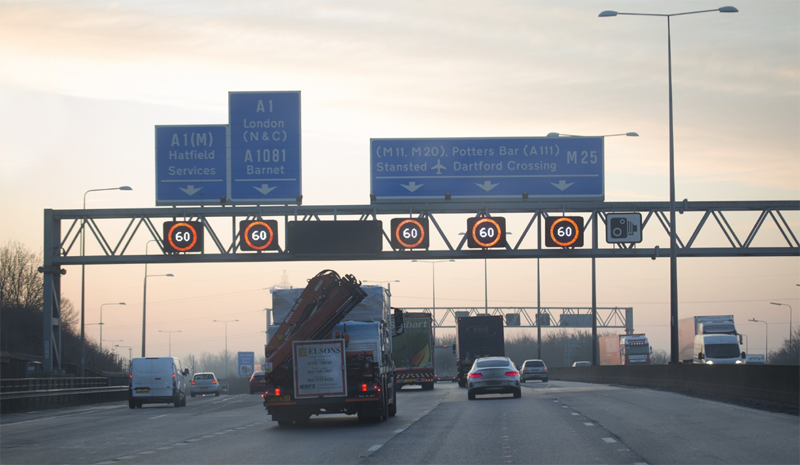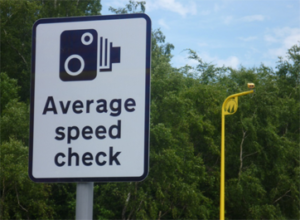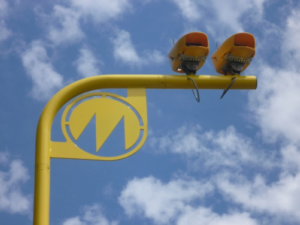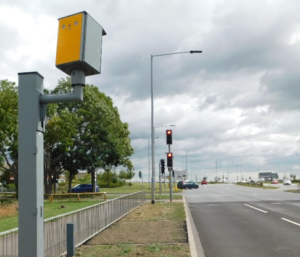Safety cameras

Safety cameras are an important element in the Safer Essex Roads Partnership’s (SERP) road safety strategy.
There are more than 100 permanent speed camera installations and 28 red-light camera installations across the SERP area (the SERP’s area covers the local authority areas of Essex CC, Southend-on-Sea BC and Thurrock Council). The road safety strategy also incorporates the use of handheld speed enforcement devices, which allows for dynamic enforcement throughout the SERP’s area at locations where, because of the level of road traffic collisions, the provision of a permanent installation is not justified but where there are public concerns over the frequency of road traffic collisions and/or speed limit compliance.
All enforcement cameras are expensive highly technical pieces of equipment, and, to explain how they operate in detail, would require a lengthy technical description. However, in this section, it is explained, in relatively simple terms, how each camera type works.
 All cameras used for enforcement purposes, whether hand-held or associated with a permanent installation, have to be Home Office Type Approved; this guarantees the integrity of the equipment and ensures that the information recorded by the camera is accurate when used in accordance with the manufacturer’s instructions.
All cameras used for enforcement purposes, whether hand-held or associated with a permanent installation, have to be Home Office Type Approved; this guarantees the integrity of the equipment and ensures that the information recorded by the camera is accurate when used in accordance with the manufacturer’s instructions.
All permanent camera installations in Essex are digitally enabled and send offence information captured directly to the processing centre at Essex police; no data is stored on-site unlike what happened until a few years ago when camera film was used. The film remained in the housing until it was unloaded by the police at approximately 7 to 10 day intervals.
Security and encryption measures are integral to the camera systems to ensure the digital evidence recorded cannot be hacked, tampered with or changed.
Many legal challenges to the accuracy of enforcement cameras have been raised over the years, but the level of testing required under the Home Office Type Approval process, and the practice of having all cameras calibrated and maintained annually, ensures their accuracy is maintained. Cameras are never used for enforcement without a correct and valid calibration certificate.
All permanent speed and red-light camera systems are supported by traffic signing which advises motorists of the presence of the enforcement device. For all types of camera installation, including red-light camera installations which, following their recent upgrade to digital functionality, can enforce the speed limit when the green signal is displayed, motorists are reminded of the speed limit a short distance before the camera.
Camera housings are usually painted yellow in compliance with Department of Transport Circular 01/2007 and will also meet other conspicuity and visibility requirements given in the Circular. However, there is no legal requirement for any camera to be painted yellow or to meet the conspicuity or visibility requirements and a speed or red-light offence cannot be invalidated because any or all of these conditions are not met.
Camera types used in the SERP’s area
 Permanent Spot-Speed Camera Installations
Permanent Spot-Speed Camera Installations
These are the single stand-alone installations where the housings are painted yellow and usually located on the left-hand side of a road. These installations have been provided for roads where there has been a number of fatal, serious or slight injury collisions over a set time period (usually 3-years), and evidence gathered via speed data collection devices showed that, prior to the camera installation, a high proportion of vehicles were exceeding the speed limit.
The majority of the spot-speed enforcement cameras in the SERP’s area were introduced as part of the Department for Transport’s National Safety Camera Programme which took place between 2000 and 2007. This type of installation only records the speed of a vehicle at a particular point or spot on the road. Hence, they are commonly referred to as spot-speed cameras or ‘Gatso’ cameras. The name ‘Gatso’ was derived from the Dutch rally driver, Maurice Gatsonides, who founded the company “Gatsometer BV” in the Netherlands in 1958 which then went on the manufacture the speed enforcement cameras which are currently used by many of the police forces around the UK.
These cameras use a passive radar system that constantly emits and receives a radar signal to measure the speed of every vehicle that passes the camera housing. If the speed measured is above the threshold set by the police two images are captured of the rear of the vehicle or motorcycle a set time-period apart (approximately 0.5 seconds) and a white flash is used to capture clear and sharp images at all times of the day and night.
White ‘ladder style’ carriageway markings are used in association with this type of camera and because the markings are applied with precise measurements these can be used to provide a secondary method of determining the speed of a vehicle.
The first camera systems of this type were introduced in 1993 and at June 2019 there were 99 camera installations of this type in the SERP’s area.
 Permanent Average Speed Camera Systems
Permanent Average Speed Camera Systems
Average speed camera systems are installed to enforce longer stretches of road or a network of roads by having cameras located at variable distances. The cameras work in pairs and use infra-red Automatic Number Plate Recognition (ANPR) cameras to calculate the average speed for each vehicle over the known length of road concerned. If this speed exceeds the threshold set by the police, an offence record is created and images and offence information are transmitted digitally to the offence processing centre. In Essex, different configurations have been used which means that images can be captured of either the front or rear of an offending vehicle.
Infrared floodlights have been installed in some situations, where street lighting was not provided or deemed inadequate, which enables number plates to be read, regardless of light or weather conditions.
The average speed camera system is particularly suitable for dual carriageway situations where there are usually fewer junctions thus minimising the number of cameras required. The average speed camera housings are normally mounted above the road and are also highlighted in yellow; the columns supporting the camera housings are also often painted yellow. Average speed cameras encourage motorists to maintain a safe speed over a long length of road, rather than at a specific location. As with permanent spot-speed camera installations, average speed cameras are placed on roads where there has been a history of fatal, serious and slight collisions.
In addition to proven casualty reduction, average speed camera systems also produce smoother traffic flows, reduced congestion, improved journey reliability and reductions in fuel consumption & emissions.
Average speed camera systems are often used on a temporary basis by highway contractors to manage traffic speeds through roadworks where narrow lanes and contraflows affect safety and particularly where the speed limit may have been reduced for the duration of the road works.
The first system introduced in Essex was on the A127 in 2009 and at June 2019 there were 8 average speed camera systems in the SERP’s area.
 Permanent Managed Motorway Camera Systems
Permanent Managed Motorway Camera Systems
Managed motorway camera systems were first introduced by Highways England on the M25 in Essex in 2015. They are permanent spot-speed measuring camera installations that uses radar technology to determine vehicle speeds, located at the side of, or above the motorway; these cameras support a variable speed limit for which signs are mounted on gantries across the motorway. The variable speed limit is sometimes used to manage a hazard or incident or to help steady the flow of traffic and reduce ‘stop-start’ traffic jams. The variable speed limits can also be automatically triggered by sensors that monitor traffic flow.
The camera housings are usually painted yellow but the system is more complex than the ‘Gatso’ spot-speed system in that they also record an image of the speed limit being displayed on the associated gantry at the time of an offence. Motorways comprise two or more lanes of traffic often travelling at higher speeds and these cameras are particularly sophisticated in that they can capture the speed of a particular vehicle across many lanes of traffic.
Mobile Hand-held Speed Cameras
SERP uses ‘Trucam’ speed measuring devices which, although hand held, are able to store video evidence of a vehicle, and records all the necessary information for the vehicle being monitored.
The hand-held speed measuring devices used by SERP use a laser to check the speed of a vehicle. When an operator sees a vehicle approaching, they first assess whether, in their view, the vehicle appears to be travelling above the speed limit. If they believe this to be the case, they aim the device at the vehicle, and when the vehicle is aligned in the target area shown on the camera screen, the operator presses the trigger. A series of beams are fired at the vehicle which reflect back to the camera, and the time difference between the beams being sent out and returned gives the speed of the vehicle.
Other hand-held cameras used by the SERP operate in a similar way but are not capable of storing a moving image of an offence. In these cases the police officer will physically stop the vehicle and take the driver or rider’s details which will be used to determine the appropriate course of action.
 Permanent Red-light Camera Installations
Permanent Red-light Camera Installations
These camera installations are single stand-alone units that are located on one or more approaches at a traffic signal controlled junction.
The camera housings are painted yellow for added conspicuity and have been installed at locations where there has been a history of personal injury collisions involving at least one driver or rider that has disobeyed a red traffic signal.
The cameras are triggered by inductive loops in the carriageway which become active when the red signal is showing; if a vehicle is detected by the loops the camera captures two images and records the necessary information.
With the current generation of digital camera systems the camera is also capable of capturing offence information of any vehicle that is exceeding the speed limit whilst the green traffic signal is showing. The speed of a vehicle is also measured by the inductive loops referred to previously.
The first camera system of this type was introduced in Southend in 1989 and at June 2019 there were 28 red-light camera installations in the SERP’s area.
FAQs
Q: I’d like a speed camera installed in my road. How do I go about requesting one?
A: If you have a concern about the safety of a road, the best way to take your concerns forward is to contact your local County Member (councillor) in the first instance. They can then consider the issue and your request and bring it to their Local Highway Panel for consideration as a potential future scheme.
